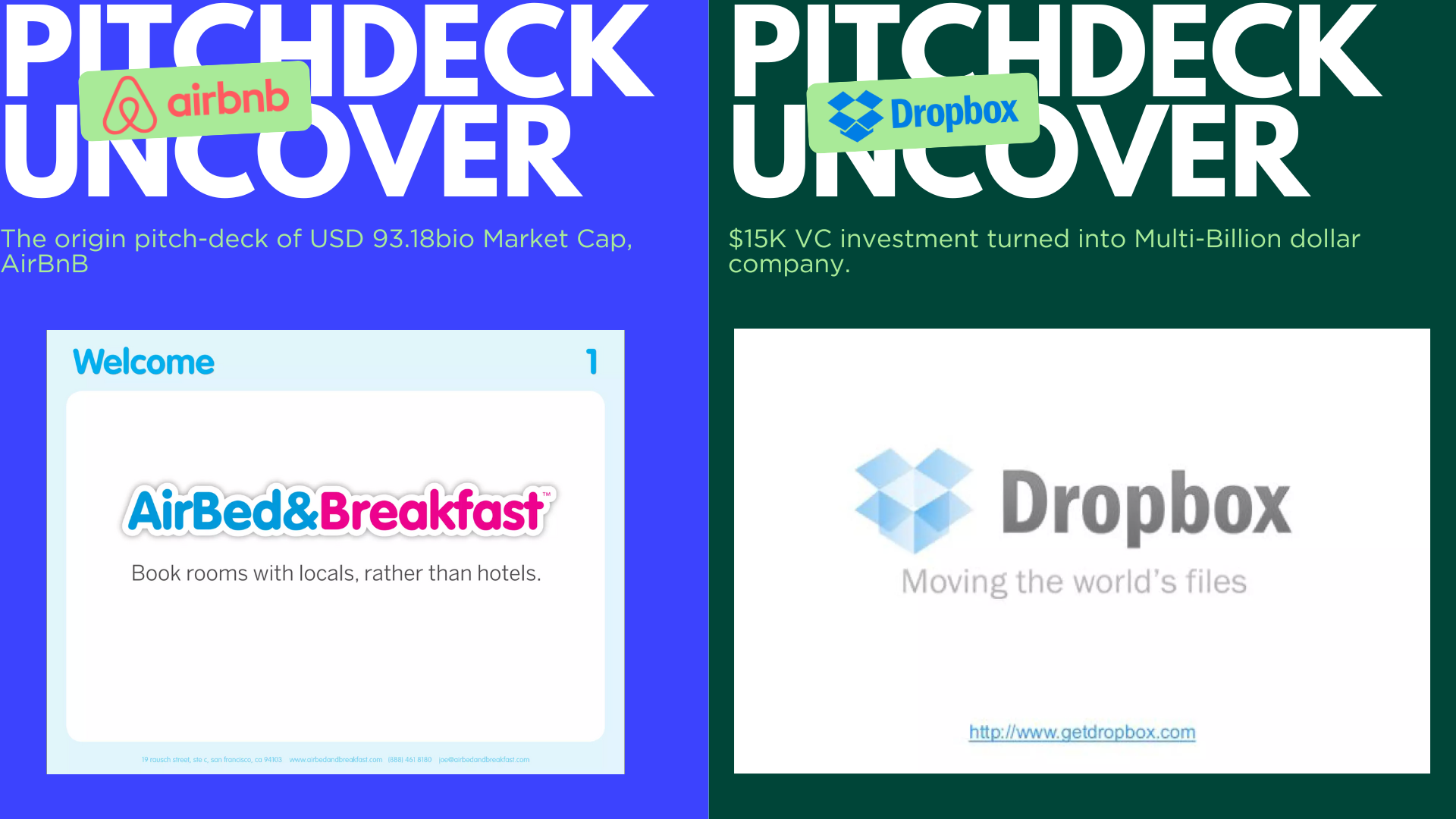In the world of startups, a pitch deck is your golden ticket to capturing investors’ attention and securing funding. A well-crafted pitch deck not only tells your story but also demonstrates your potential for success. Here’s how you can create a pitch deck that stands out and leaves a lasting impression on your audience.
1. Start with a Strong Opening
Title Slide Your title slide should include your company’s name, logo, and a tagline that succinctly describes what you do. Make it visually appealing to set a professional tone from the outset. Example: “EcoClean – Revolutionizing Eco-Friendly Cleaning Solutions.”
Introduction Begin with a compelling hook. This could be a personal story, an interesting fact, or a bold statement that highlights the problem your startup is solving. The goal is to grab attention and make the audience eager to hear more. Example: “Did you know that over 50 billion tons of waste end up in landfills each year? EcoClean is here to change that.”
2. Clearly Define the Problem
Problem Statement Identify the specific problem your product or service addresses. Use data and real-life examples to illustrate the magnitude of the problem. This helps investors understand the relevance and urgency of your solution. Example: “Traditional cleaning products are not only harmful to the environment but also to our health. Studies show that 90% of household cleaning products contain toxic chemicals.”
3. Present Your Solution
Solution Overview Describe how your product or service solves the problem. Highlight key features and benefits, and explain why your solution is better than existing alternatives. Visual aids like screenshots, diagrams, or videos can be very effective here. Example: “EcoClean offers 100% biodegradable cleaning products that are as effective as traditional cleaners but safe for both the environment and your family. Our unique formula uses natural ingredients to provide a powerful clean.”
4. Highlight Your Market Opportunity
Market Size and Segmentation Provide an overview of your target market. Include data on market size, growth potential, and customer segments. This demonstrates the scope of the opportunity and validates the potential for scale. Example: “The global eco-friendly cleaning products market is expected to reach $50 billion by 2025, growing at a CAGR of 10%. Our target market includes eco-conscious households and businesses.”
5. Showcase Your Business Model
Revenue Model Explain how your startup makes money. Detail your pricing strategy, sales process, and any key partnerships. Highlight any traction or revenue you’ve already achieved to build credibility. Example: “We sell our products through a subscription model, offering monthly delivery of our cleaning kits. We’ve partnered with major retailers like Whole Foods to expand our reach. In our first year, we achieved $1 million in revenue.”
6. Outline Your Go-to-Market Strategy
Marketing and Sales Plan Describe your plan for acquiring and retaining customers. Discuss your marketing channels, sales tactics, and any strategic partnerships. This shows investors that you have a clear path to market entry and growth. Example: “Our go-to-market strategy includes digital marketing campaigns targeting eco-conscious consumers, influencer partnerships, and in-store promotions. We also plan to launch a referral program to drive word-of-mouth growth.”
7. Introduce Your Team
Team Slide Introduce your core team members and their backgrounds. Highlight relevant experience, skills, and achievements that make your team uniquely qualified to execute your business plan. Investors invest in people as much as in ideas, so this slide is crucial. Example: “Our CEO, Jane Smith, has over 10 years of experience in the cleaning industry. Our CTO, John Doe, holds multiple patents in green chemistry. Together, they bring a unique blend of industry knowledge and innovative thinking.”
8. Provide Financial Projections
Financial Forecasts Include projections for revenue, expenses, and profitability over the next 3-5 years. Use charts and graphs to present your financial data clearly. Be prepared to explain your assumptions and justify your projections. Example: “We project revenues of $5 million in year 2 and $15 million in year 3, with a gross margin of 60%. Our customer acquisition cost is expected to decrease as we scale, leading to profitability by year 3.”
9. Highlight Your Achievements and Milestones
Traction Showcase any significant achievements to date, such as user growth, revenue milestones, partnerships, or awards. This provides proof of your progress and potential. Example: “In just six months, we’ve acquired 10,000 active subscribers and secured partnerships with three major retailers. We were also awarded the ‘Best Eco Startup’ at the Green Innovation Awards.”
10. Conclude with a Strong Closing
Call to Action End with a clear call to action. Specify what you’re asking from investors, whether it’s funding, partnerships, or advice. Provide your contact information and invite them to ask questions. Example: “We are seeking $2 million in seed funding to scale our operations and expand our product line. Join us in making the world a cleaner, healthier place. Contact us at jane@ecoclean.com.”
Tips for a Memorable Pitch Deck
- Keep It Concise: Aim for 10-15 slides. Focus on the most critical information to keep your audience engaged.
- Be Visual: Use images, infographics, and minimal text. A picture is worth a thousand words.
- Tell a Story: Craft your deck like a narrative, with a clear beginning, middle, and end. A well-told story can be more persuasive than dry data.
- Practice Your Pitch: Rehearse your presentation multiple times. Be ready to answer questions and provide additional details if asked.
Final Thoughts
Creating a memorable pitch deck is both an art and a science. It requires a clear understanding of your business, your market, and what investors are looking for. By following these guidelines, you can craft a pitch deck that not only captures attention but also secures the funding you need to turn your vision into reality.

